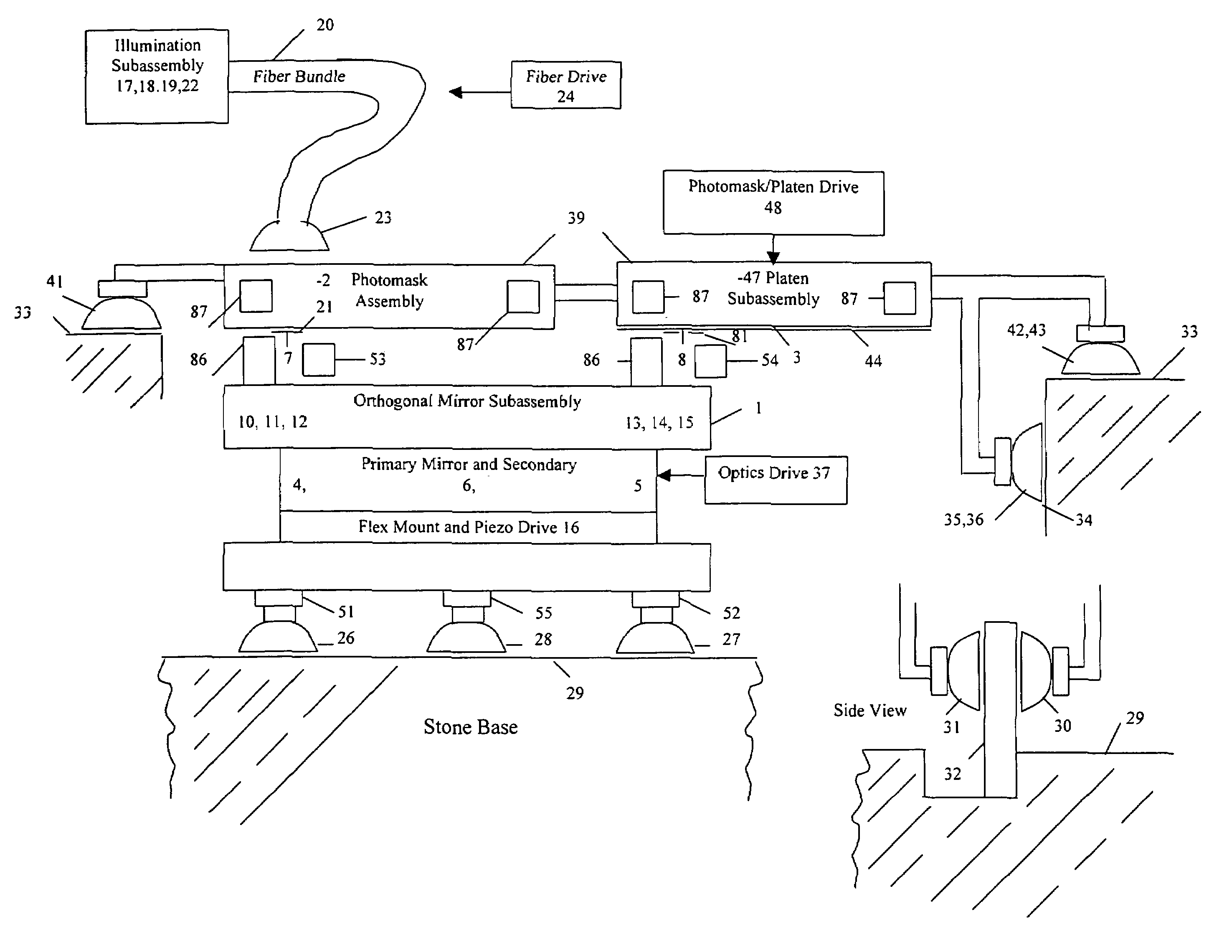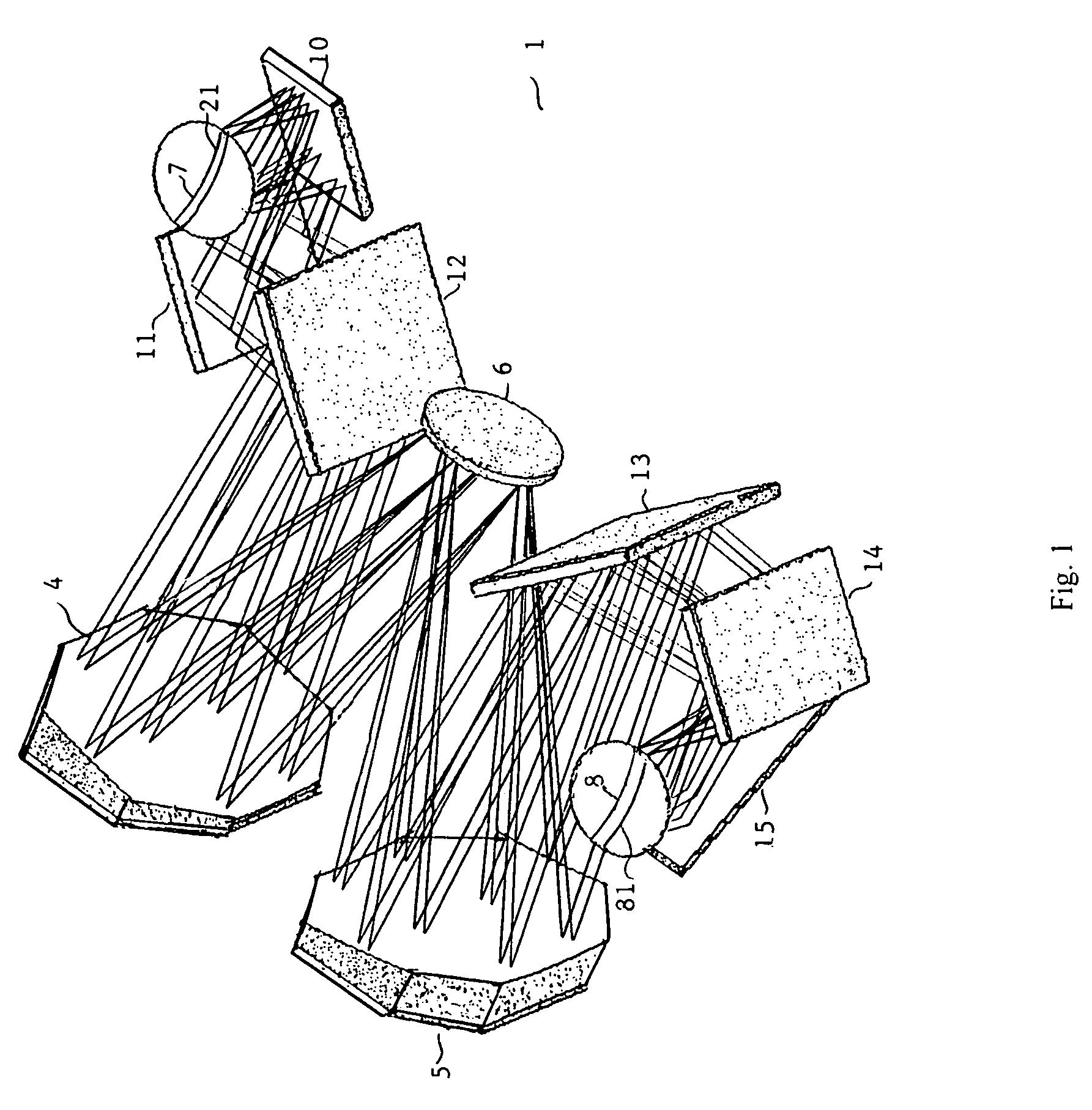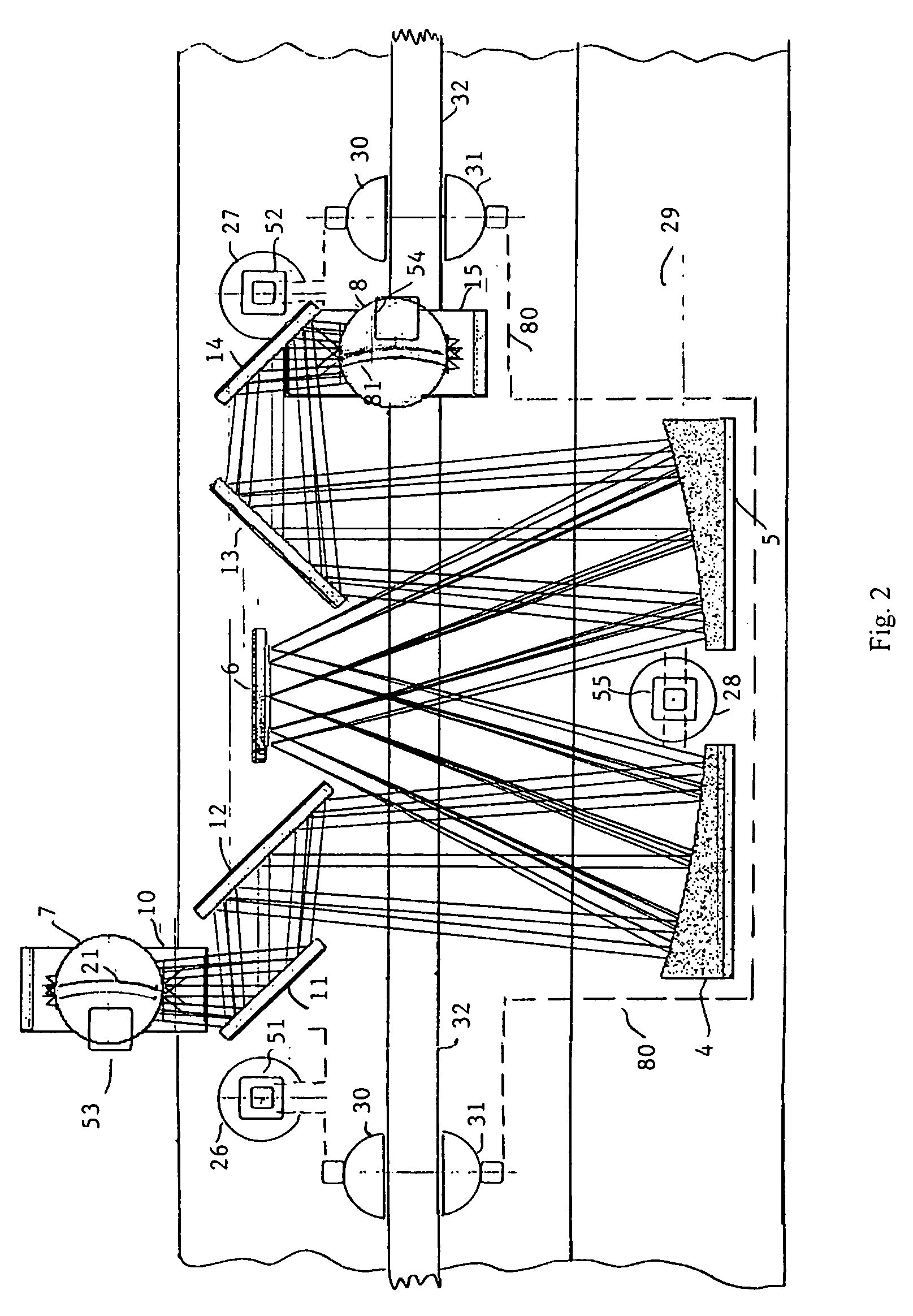Roll printer with decomposed raster scan and X-Y distortion correction
a raster scan and raster scanner technology, applied in the field of semiconductor circuits and display panels, can solve the problems of insufficient correction of achromatic systems (corrected for two wavelengths), insensitive to the color of broadband sources, bulky and expensive apochromatic systems (three or more wavelengths) and insufficient correction of achromatic systems (corrected for two wavelengths). , to achieve the effect of a considerable variation in the level of the format plan
- Summary
- Abstract
- Description
- Claims
- Application Information
AI Technical Summary
Benefits of technology
Problems solved by technology
Method used
Image
Examples
Embodiment Construction
[0044]The preferred embodiment of this invention is an optical machine for the processing of display screens, multilayer circuits constructed on flexible material and the like. It comprises a series of assemblies which operate together under the control of a multiaxis controller, to produce large exposed patterns or panels in a semi-automatic manner. The separate assemblies will be described separately followed by a description of the way in which they work together.
[0045]The optical transfer assembly 1, FIGS. 1–5, which images detail from the photomask 2 to the format 3 is an all-reflecting erecting configuration similar to the arrangement first described by Offner, Ref. 2 except that the primary concave mirror is composed of two controllably moveable smaller mirrors, the secondary mirror is aspheric, and the erecting mirrors are differently and more advantageously arranged. The two primary mirrors are concave spheres 4, 5 and one, the convex secondary, is aspheric, 6. FIG. 1 shows...
PUM
| Property | Measurement | Unit |
|---|---|---|
| sizes | aaaaa | aaaaa |
| sizes | aaaaa | aaaaa |
| sizes | aaaaa | aaaaa |
Abstract
Description
Claims
Application Information
 Login to View More
Login to View More - R&D
- Intellectual Property
- Life Sciences
- Materials
- Tech Scout
- Unparalleled Data Quality
- Higher Quality Content
- 60% Fewer Hallucinations
Browse by: Latest US Patents, China's latest patents, Technical Efficacy Thesaurus, Application Domain, Technology Topic, Popular Technical Reports.
© 2025 PatSnap. All rights reserved.Legal|Privacy policy|Modern Slavery Act Transparency Statement|Sitemap|About US| Contact US: help@patsnap.com



